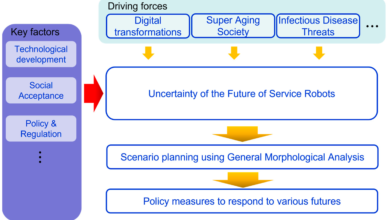How to Leverage Programmatic Advertising in Mobile Gaming

Advances in digital technology in recent years have transformed the mobile gaming landscape. What was once purely entertainment now serves as a platform for learning and business. For example, according to Electronics Weekly, by 2023, mobile gamers alone have already earned more than $92.6 billion worldwide in 2023 more than $92.6 billion worldwide – 49% of total video game revenue across PC and console games. Mobile game industry trends include hyper-casual games and story-driven puzzle games, suggesting a very narrow user segmentation. To effectively segment gamers as advertising consumers, gamified marketing offers brands new and precise targeting opportunities. In the following discussion, we will explore how you can leverage these tools today.
Whether you’re a mobile game developer, marketer, or gamer, join us! Programmatic advertising has something to offer everyone.
Advantages of programmatic advertising in mobile games
In the world of mobile games, every tap of the screen leads to a new adventure. Programmatic advertising has seamlessly integrated itself into the gaming experience. What transformed previously intrusive ads into something unobtrusive, useful, and even beneficial for players? The answer lies in programmatic advertising. SmartyAds, a global company specializing in complete programmatic advertising solutions, share their experience:
- On the list of programmatic advertising benefits, hyper-personalization ranks at the top. This form of advertising adapts to each individual player’s behavioral characteristics, considering their interests and user history. It doesn’t merely display banners; it offers content tailored to what you’re genuinely interested in.
Well, let’s say you’re obsessed with strategies, in which you’ll only see offers related to building or military conquest of the virtual world.
- The second most important benefit is effective targeting. This is the tool that can find the needle in the haystack – the right audience in a world of millions. In practice, brands can select audiences based on geolocation, demographics, web behavior and related interests.
If you promote cosmetics, your ads will be shown to players whose browsing history shows an interest in fashion and beauty. If you offer virtual office services, your ads will target those who play business strategy games.
- And the most valuable thing programmatic advertising has to offer is dynamic ads that change as the game unfolds.
Imagine you’re playing a survival race. You switch cars along the way. And dynamic ads offer you car accessories of the brands of the cars you are driving to survive at the narrow moment of the ad.
For a better understanding, consider that programmatic advertising isn’t merely a series of banners and videos unrelated to the current moment in the game. It’s a powerful tool that bridges the gap between brands and players in the virtual world at any given moment. Join us!
Best practices and trends in programmatic advertising for mobile games
It’s time to see what’s behind the promise of value. Fact: Virtual worlds, endless possibilities, millions of players – mobile gaming has become an integral part of our daily lives. The ability to reach every player- potential consumer – promises rewards. But how do brands get their message across to their audience without getting lost in the sea of choices? Let’s look at programmatic advertising from a different angle – it’s a tool, like a headhunter, that knows how to find valuable material through trial and error, augmented by AI. Meet it:
- Automated A/B testing: It’s a technique that, by optimizing creative and messaging, allows you to compare different versions of ads to determine which is more effective.
What is the value of this approach? In the world of mobile gaming, where player attention is a valuable resource, every pixel of an ad must work for results where you don’t have the luxury of trial and error.
- Lookalike Audiences: This is a strategy where we look for new users who are similar to those who are already playing our game. The idea is that the program will identify a new audience based on similarities to previous users. The behavioral patterns of the old players suggest that the new ones will come to life through playing the game.
What is remarkable about this approach? It allows for fewer attempts to offer something to hit the target.
- Geofencing: This is a technology that activates ads based on a user’s geolocation. For example, in programmatic ad settings, you can show ads only in specific locations – for example, near gaming centers or within cities.
Why it’s important? It helps brands get closer to their audience and create contextually relevant ads.
In this way, programmatic advertising seamlessly aligns with the development trends in the mobile games industry. The programmatic ad emphasizes process automation and maximum personalization. It’s akin to games, where open storylines evolve based on player behavior, and ads are served contextually – taking cues from the player’s location and the game’s logic, as emphasized by Screencore. Welcome to a new world where the boundary between reality and the game is remarkably thin.
Counterarguments and alternatives
Programmatic advertising promises to swiftly deliver your message to the intended audience, but the underlying automation and quality refinement have certain limitations. It revolves around analytics quality and user experience, emphasizing the importance of precise data analysis. Incorrect data adjustments or interpretations can render campaigns ineffective.
Another pitfall lies in uncontrolled automation. When programmatic advertising operates automatically, its decisions can occasionally be unexpected, if not outright incorrect. The issue? You can’t always anticipate which ads will appear for users, potentially compromising their experience. That’s why, when facing challenges – whether customizing programmatic settings or understanding the processes – it’s advisable to seek domain experts like SmartyAds. Third-party expertise allows you to gain invaluable insights without exceeding your advertising budget. Get more about the disadvantages of programmatic advertising at Built In.
To sum up
Programmatic advertising in mobile games is a potent tool that enables brands to effectively engage their audience. However, to leverage it successfully, one must consider the technology’s nuances and potential constraints, such as the quality of analytics and the risks associated with automation. Employing strategies like A/B testing, audience matching, and geofencing can enhance personalization and amplify ad campaign effectiveness. Keeping pace with mobile gaming trends, such as automation and personalization, it is essential to remember that even the most sophisticated technology demands meticulous oversight and expert guidance to fully realize its potential – that’s where professionals come in.





